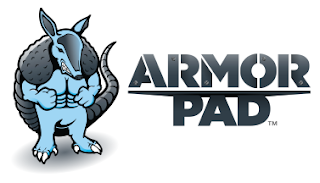QUINCY COLUMBIA BASIN IRRIGATION DISTRICT (QCBID), WASHINGTON, USA
The Background
In 1902, Congress passed the Reclamation Act which authorized the construction of irrigation storage and delivery systems. This included projects for the Columbia Basin region. The Columbia Basin Project was set in motion by President Roosevelt with the construction of the Grand Coulee Dam, which began in 1933. A railroad was built to move materials and workers to the building site. Congress then authorized the Columbia Basin Irrigation Project in 1943 and the first water deliveries started in 1948.
The Project
 |
| Longer lasting, sustainable canals minimize the loss of water |
Today, because of canal expansions and additional pumping plants, the number of irrigated acres is over 680,000 in the Columbia Basin. In addition, the Columbia Basin Project provides power for millions of homes, controls flooding in the lower Columbia region, creates habitat for endangered species, and provides areas of recreation. With water being such a vital component of life in the Columbia Basin, the QCBID has taken it upon themselves to provide longer lasting sustainable canals which will minimize the loss of this precious water and deliver it to the farmlands that need it. In 2009, QCBID entered into a coordinated water conservation plan with the East and South Columbia Basin Irrigation Districts and the Washington State Department of Ecology to conserve water and alleviate canal capacity.
The Challenge & IPG's Solution
 |
| “Having a single piece of liner which covered the width of the canal saved us time and money.” –Halme Construction, Spokane, WA |
IPG manufactures a wide range of woven reinforced geomembranes. ArmorPad 3NWLD is composed of a 5-layer system which is thermally bonded to provide some of the highest shear strength amongst liners on the market. It begins with strong, reinforcing scrim. Both sides of the scrim are bonded with impearmeable coatings creating a strong geomembrane liner that is both durable and flexible. ArmorPad then has a unique non-woven bonded to both outside surfaces, providing higher puncture resistance and extended durability.
In the case of this project for QCBID, the non-woven also acts as a bonding surface for the concrete which is applied directly onto the geomembrane composite.
The Installation
 |
| 3-bead hot melt adhesive applicator |
Installers then pulled the other side across the bottom of the canal and placed it in the adjacant anchor trench. The ArmorPad 3NWLD composite is flexible enough to fit around most corners, however on some of the corners which were closer to 90-degrees, the contractor left enough slack material to make a cut and fold it over. The panels of liner were overlapped approximately 1 foot and each overlap was shingled downstream. The direction of overlap is commonly overlooked when placing liners in canals and is one of the easiest mistakes to overcome! Halme construction had no issues with installing the liner in this manner. The next step was to connect each seam of the large panels together. A hot melt adhesive applicator was utilized. Each seam was completed with more than the recommended adhesive because of the ease at which the adhesive was applied. The hot melt adhesive unit heats the adhesive and pumps it through a nozzle, delivering three beads. The contractor would make 2-3 passes using this applicator for a strong, long lasting seam. Quality control was done on several of the seams and yielded higher peel and shear strength than most welded seams.
 |
| 4” of concrete was applied over the top of the ArmorPad Geomembrane Liner |
So far, the QCBID has installed more than six miles of rehabiliated canals with an estimated water savings of more than 1,257,786,517 gallons - the equivalent of 1,904 Olympic swimming pools.
For more information on this project, and the benefits that IPG ArmorPad can provide for your site, you can visit IPG’s website at www.itape.com or speak with one of your local IPG representatives.
References:
QCBID - Quincy Columbia Basin Irrigation District
Halme Construction-Spokane, WA
Western Ag. Tolleson, AZ




No comments:
Post a Comment